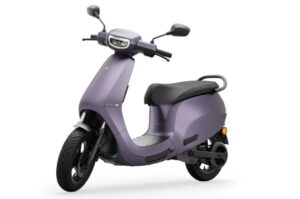
What is an E-Bike?
When most people hear the term “electric bikes,” the first thing that comes to mind is a scooter or an electric motorcycle, but they are not the same thing. Consider a standard bicycle, then add many electrical components such as a motor, battery, and controller that are all smoothly integrated into the design. These components are the foundation of all eccentric bicycles on the market!
How Does an Electric Bike Work?
A motor on an electric bike is normally housed either centrally on the bike (commonly referred to as a mid-drive motor, operated by the cranks) or on the front or back hub. A hub-mounted motor will directly push the wheel around, whereas an axle-mounted motor will work through the eBike’s chain and gears. When you pedal, a torque sensor measures your effort and compares it to the power output of the motor. The goal is that the motor will not take over totally; instead, you should obtain continuous power delivery that won’t send the bike lurching forward.
The battery, which may be mounted on the outside or hidden within the frame, provides power. Many batteries can be removed for charging, while others must be charged while riding. If that’s the case, you’ll need a place to park the bike near a power outlet. A motor controller, normally positioned on the handlebars or built into the frame, will allow you to choose how much assistance you want and keep an eye on the battery level. Some will have a screen with navigation and other features.
Popular eBike motor manufacturers include Bosch, Shimano, Yamaha, Specialized, Mahle, FSA, and Fazua. Specifications might vary greatly, and the sort of motor found on a bike will be determined by its price and intended use. For example, an electric road bike is more likely to favour a lightweight system with smooth power delivery, whereas a motor on a high-spec electric mountain bike is more likely to offer more torque for off-road performance.
Advantages Of E-Bike
Electric bikes have a longer range and are easier to use, allowing users to travel without sweating, move bigger things, utilize bikes for more errands, and take longer journeys. They also make riding more accessible to older cyclists and people with disabilities. All of these benefits were corroborated by a 2018 study conducted by the National Institute for Transportation and Communities, which polled 1,800 e-bike riders who indicated battery-powered biking enabled them to take longer and more diverse trips.
- Lightweight – high-capacity, 36V10Ah Lithium-Polymer batteries can weigh as little as 6 pounds!
- Offer a longer riding range – the battery can travel up to 40 miles in pedal-assist mode (or 20 miles on throttle-only).
- The longer life span of about 800 charges or 3 years of virtually daily use
- Inexpensive
Do Electric Bikes Really Help the Environment?
There is no getting past the fact that electric bikes require electricity, which isn’t always provided by renewable sources. As a result, a single electric bike trip is less environmentally friendly than a traditional bike excursion.
When e-bikes substitute automobile trips, however, they make a significant impact. According to the most current National Household Travel Survey, 35% of car trips in the United States are two miles or less. If a significant percentage of those excursions, particularly those involving heavy things or bags of groceries, could be replaced by trips on an electric bike, the carbon reductions would be huge, not to mention the reduction in traffic and congestion.
What Types of Electric Bikes are There?
We have a separate guide to electric bike types, however, practically any bike with a motor may be found. Hybrids and mountain bikes are the most frequent types of electric bikes. Electric hybrid bikes have flat handlebars and hefty, puncture-resistant tyres, making them ideal for commuting, shopping, and longer journeys. They may also include mudguards (or the eyelets to install full-length mudguards), a rack, lighting, and a step-through frame design to make getting on and off the bike easier.
Electric mountain bikes often include a powerful engine with a high torque output to assist you in climbing loose off-road terrain and navigating hazards. When you reach the top, you can turn off the motor and enjoy the downhill journey.
There are also an increasing number of electric road bikes on the market. They’re meant to ride fast and are usually somewhat lightweight (in terms of electric bikes) to aid in handling and hill climbing.
The number of Electric gravel bikes is also increasing. E-gravel bikes are meant to offer the versatility to really widen your riding, with bigger tyres to let you go off-road with confidence and drop handlebars for road speed.
A folding electric bike will be built for portability and compactness, allowing it to be used on public transportation or folded up for simpler storage at home or work.
There are also electric cargo bikes, which are designed to transport loads for deliveries around town and other day-to-day jobs where a car or van would suffice.
E-Bike Safety Tips
Keep an extra eye out for traffic. People in cars already misjudge the speed of bikes. Drivers will not expect you to travel at the same speed as them until e-bikes become more prevalent. Ride defensively, presuming they don’t notice you. Keep your speed under control in busy locations. Use daylight-riding lights to make yourself as noticeable as possible.
Stop and proceed cautiously. Because you’re heavier and faster, slowing down and stopping will take longer. Squeeze the brakes well in advance of intersections. Remember that the bike will accelerate faster than usual, so wait until it’s completely clear before pushing out into traffic. Also, because the bike is heavy, you may feel shaky the first few times you start or slow down. Before you hit the busy highways, practice mounting, dismounting, and stopping in safe places.
Conclusion
In short, if you require assistance when riding, you can locate an electric bike to meet your needs. A variety of causes are driving the increased popularity of e-bikes, including environmental concerns, a desire for exercise, and the high expense of taking public transportation. As a result, it’s no wonder that we’re seeing a surge in the number of creative e-bikes, ranging from multi-purpose e-bikes that can transport both people and things to e-rickshaws.
Read To Know:
Step by Step Guide to Car Driving






